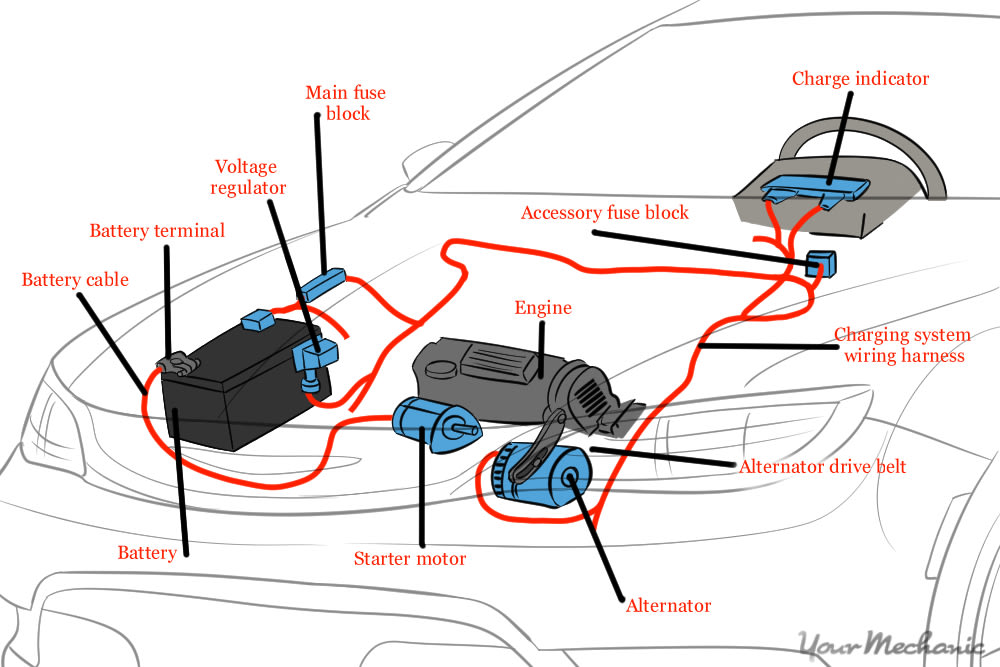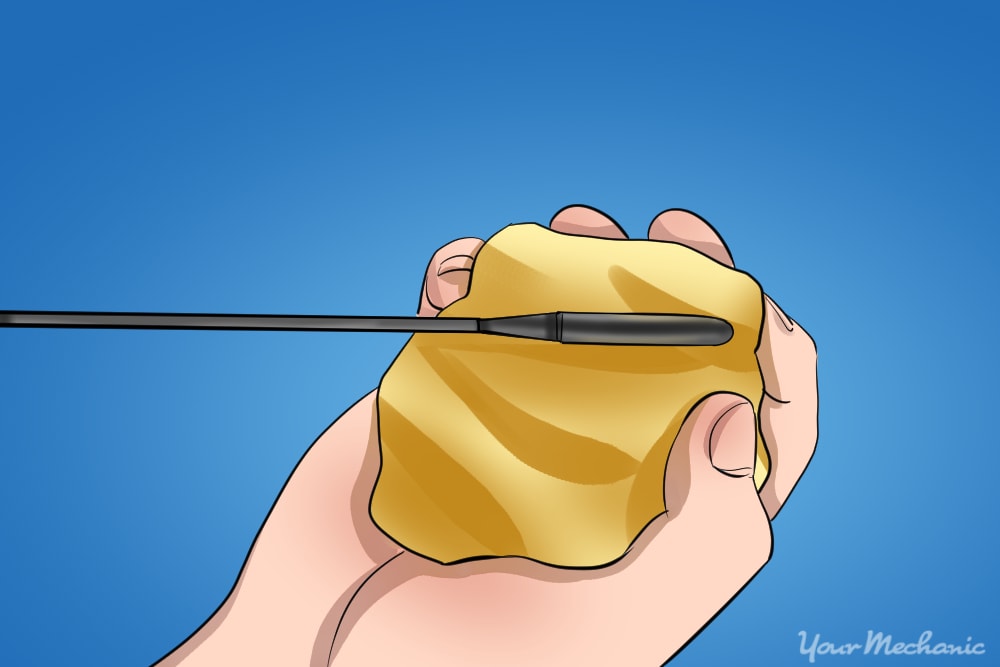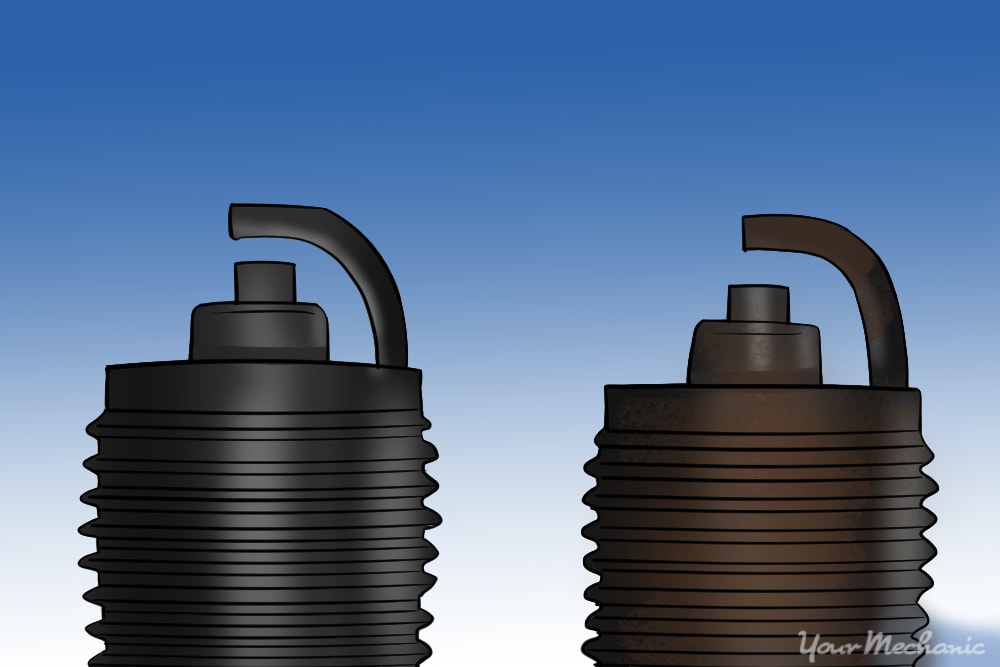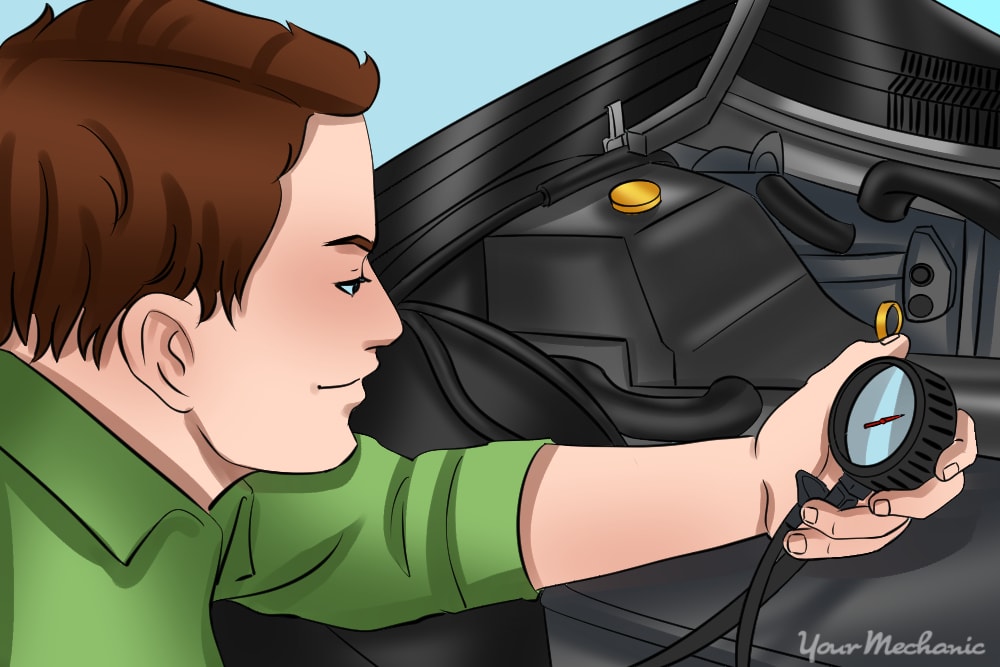

Cars are complex mechanical and electrical parts of our daily lives. Many different systems can cause the vehicle to die, usually when it is most inconvenient. The most important part of preparing is having regular maintenance performed.
This article will cover the various items to check and maintain that can cause the vehicle to die. The parts are the electrical system, oil system, cooling system, ignition system and the fuel system.
Part 1 of 5: Electrical charging system
Materials Needed
- Basic tool set
- Electrical multimeter
- Eye protection
- Gloves
- Shop towels
The vehicle's charging system is responsible for keeping the vehicle's electrical system charged so the car can continue to run.
Step 1: Check the battery voltage and condition. This can be done with a multimeter to check for the voltage or a battery tester which also tests the condition of the battery.
Step 2: Check the alternator output. The voltage can be checked with the multimeter or an alternator tester.
Part 2 of 5: Checking the engine and transmission oil
Material Needed
- Shop rags
Low or no engine oil can stop the engine from running and cause it to seize. If the transmission fluid is low or empty, the transmission may not shift right or operate at all.
Step 1: Check the engine for any oil leaks. These may range from areas that look wet to areas that are actively dripping.
Step 2: Check the oil level and condition. Locate the dipstick, pull it out, wiping it clean, and reinsert and pull it out again.
The oil should be a nice clear amber color. If the oil is dark brown or black it needs replaced. Make sure the oil level is at the proper height as well when you check it.
Step 3: Check the transmission oil and level. The method to check the transmission fluid varies with make and model and some may not be able to be checked at all.
Fluid should be clear red for most automatic transmissions. Check for any oil leaks or seeps on the transmission body, too.
Part 3 of 5: Cooling system check
The vehicle's cooling system is responsible for keeping the engine temperature within a specified range. When the temperature gets too high, the vehicle can overheat and die.
Step 1: Check the coolant level. The cooling system coolant level will need to be checked.
Step 2: Inspect the radiator and hoses. The radiator and hoses are a common source of leaks and should be inspected.
Step 3: Inspect the cooling fan. The cooling fan should be inspected for proper operation so the system is running at its best.
Part 4 of 5: Engine ignition system
Spark plugs and wires, coil packs, and the distributor are the ignition system. These provide the spark that burns the fuel allowing the vehicle to run. When one or more components are not working, the vehicle has a misfire which can prevent the vehicle from running.
Step 1: Check the spark plugs. Spark plugs are a regular maintenance item and should be replaced at manufacturer's service intervals.
Be sure to note the coloration and wear on the spark plugs. Usually the spark plug wires if equipped are replaced at the same time.
Other vehicles are equipped with a single distributor or coil packs on each cylinder. These components all are checked to make sure the spark gap does not get too large or the resistance gets too high.
Part 5 of 5: Fueling system
Material Needed
The fuel system is controlled by the ECU and supplies fuel to the engine to be burned to keep it running. The fuel filter is a common maintenance item that must be replaced to avoid clogging in the fuel system. The fuel system consists of the fuel rail, injectors, fuel filters, gas tank and fuel pump.
Step 1: Check the fuel pressure. If the fuel system is is not operating properly, the engine may not run at all, causing the engine to die.
Intake air leaks can also cause the engine to die because the ECU leans the fuel/air ratio out, causing stalling. Use a fuel gauge to determine if your pressure is within the proper range. Consult your vehicle’s manual for specific details.
When the car cuts out and loses power it can be a scary situation, one that should be avoided at all costs. Many different systems can cause the car to cut out and lose all power. You should be sure to have a safety inspection performed and to keep your car on a regular maintenance schedule.







